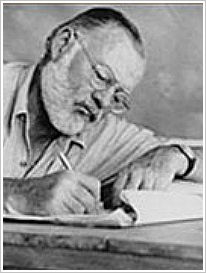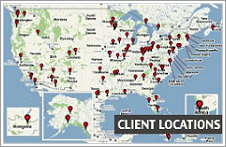Ernest Hemingway didn’t have the typical job, but he said volumes about productivity when he observed, “Never mistake motion for action.”
How about you? Does it ever feel like you’re on a nonstop treadmill of busyness?
If so, here are ten ways to slow down and ensure that you’re taking meaningful action.
1. Do less in order to do more. Scour your schedule for tasks that amount to meaningless busywork. Stop these costly habits, and redirect your saved time to work that will add value.
2. Know when “good enough” is good enough. Some work activities don’t call for a perfectionist’s extra effort. Learn to spot those “okay is okay” tasks, and dial down your time accordingly.
3. Use a timer. If you want to spend 30 minutes on a given task, set a timer (on your phone or watch) and stop when it goes off. Keep pace by keeping an eye on the time as your work unfolds.
4. Schedule meetings for before 10 a.m. or after 3 p.m. By holding meetings early or later, you and other meeting-goers will preserve a bigger stretch of uninterrupted time during the workday.
5. Respond to e-mail and messages twice a day. It’s tempting to jump whenever something beeps. Turn off the notifications, and go from reactive to proactive by scheduling two quick blocks of time each day to respond.
6. Take a break. Ten minutes away from work can clear the mind, reduce stress, and put things in perspective. When you reboot your computer, it works better. Shouldn’t you reboot yourself?
7. Learn how to single-task. When we do multiple activities at the same time, our mental processors slow down. Start doing one thing well at a time.
8. Get a smart start. Make a habit of beginning your day by working on the day’s most important task. This will set a productivity precedent and give you good momentum.
9. Quarantine the phone. Does it even need to be said?! Turn off your phone, put it away, and focus on the work at hand.
10. Get more productive together. At your next meeting, ask others: “What can we do to be make better use of our time? What can we do as individuals, and what can we do as a team?” Write ideas on a flipchart or white board. At the next meeting, have people report progress, and ask for more ideas. Over time, productivity will become a higher priority, and more people will take positive action.
In case you’re wondering about Hemingway’s own productivity: He wrote ten novels, ten short-story collections, and five works of nonfiction over the course of about 30 years. He is widely recognized as one of America’s most respected authors, and every list of classic American literature includes at least one of his books. Among them: The Old Man and the Sea, A Farewell to Arms, The Sun Also Rises, and For Whom the Bell Tolls.




